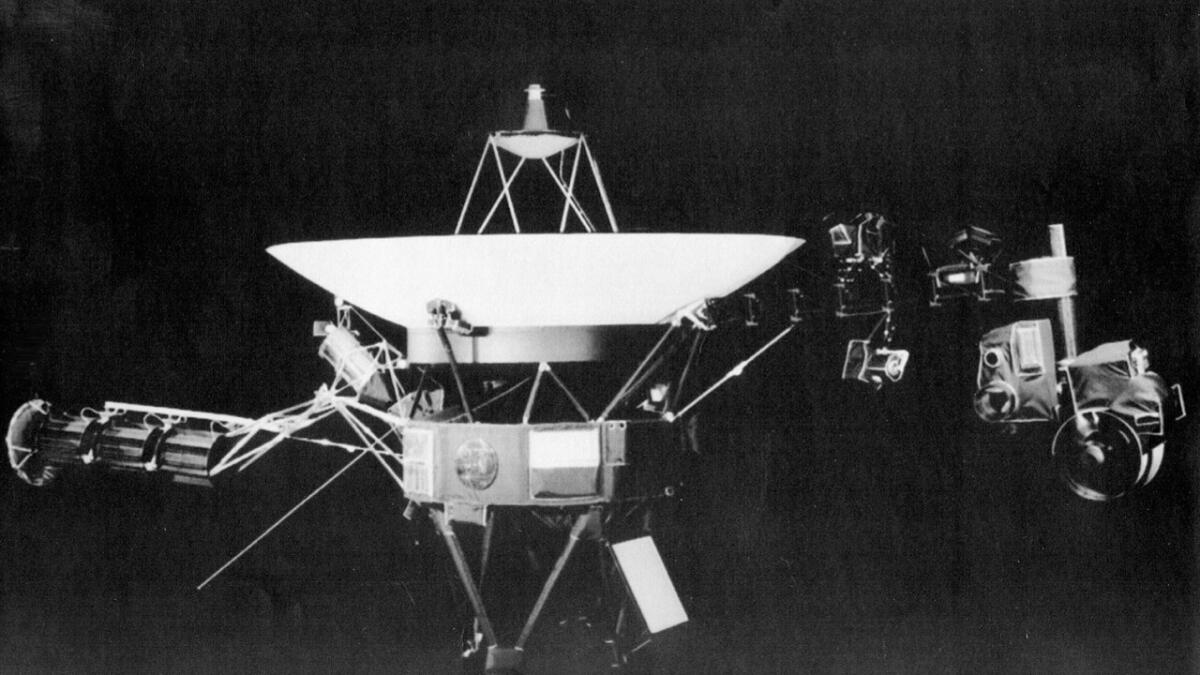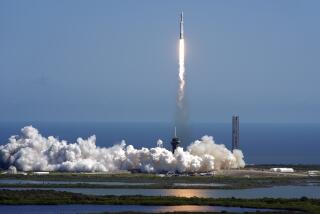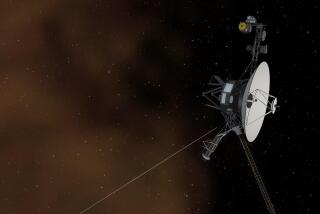Farewell, Voyager 2: NASA’s pioneering spacecraft joins its twin in interstellar space

NASA’s Voyager 2 spacecraft has become the second human-made object to enter interstellar space.
The probe, which blasted into space 41 years ago, exited the outer boundary of the sun’s heliosphere on Nov. 5, NASA scientists announced Monday at a meeting of the American Geophysical Union in Washington, D.C. It is now more than 11 billion miles away from Earth.
The heliosphere is a protective “bubble that the sun creates around itself,” said Ed Stone, project scientist for the Voyager mission and a former director of the Jet Propulsion Laboratory in La Cañada Flintridge.
Multiple instruments aboard Voyager 2 captured the probe’s transition from the outer edge of this bubble to the mostly empty space beyond. Hot solar wind is on one side; the chill of the interstellar medium is on the other.
Voyager 2’s twin, Voyager 1, flew into interstellar space around Aug. 25, 2012, although NASA wasn’t able to say so with certainty until more than a year later. That craft, which launched 16 days after Voyager 2, is now 13 billion miles from Earth.
Interstellar space is dense with cool plasma, the remnants of long-dead stars. With multiple instruments still in good working order, including the Plasma Science Experiment, Voyager 2’s data will help scientists learn more about interstellar space, particularly the region where it meets the heliopause, Stone said.
Voyager 1’s plasma science instrument broke way back in 1980, so it didn’t capture this type of data when it made its historic crossing.
Both Voyagers flew past Jupiter and Saturn. After visiting the ringed planet in late 1980, Voyager 1 began its journey toward interstellar space. Voyager 2 flew past Uranus and Neptune before heading for interstellar space in 1989.
They still have a very long way to go before they leave the solar system. NASA estimates it could take 30,000 years for Voyager 2 to fly all the way through the Oort Cloud, a spherical shell of icy objects that scientists believe is a source of many comets. Only then will the solar system be in Voyager 2’s rearview mirror.
But it will run out of power long before then. Voyager project manager Suzanne Dodd said both of the probes could survive for another five to 10 years before their radioactive fuel sources are depleted and they succumb to the cold.
The Associated Press contributed to this report.








